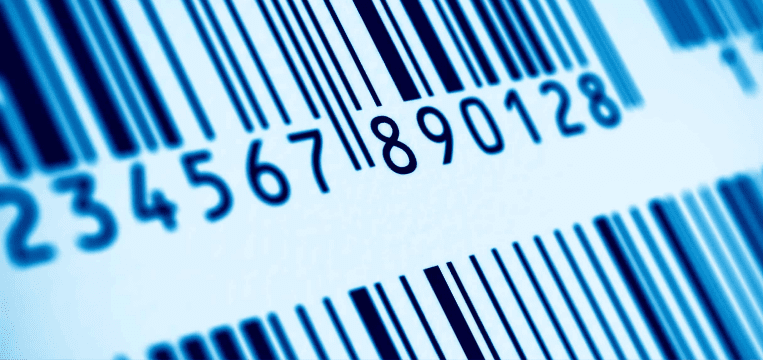1. Monitoring the behavior of honey bees
Scientists made innovative use of barcodes to automatically identify and track bees. This was no trivial matter, as even the most information-dense existing 2D barcodes could not be downsized to fit on a bee’s back while still being easily readable by cameras.
So instead, they created their own barcode symbology, aptly named BEEtag. This barcode is just big enough to encode a unique identifier for each honey bee. Thanks to the tiny codes, cameras can monitor hundreds of bees at once. This lets scientists keep records of their individual behavior patterns. As it turns out, bees have quite diverse personalities, with some being literal busy bees and others taking a more relaxed approach to their daily duties.
The same technology has since been used to track other animals, e.g., by outfitting zebra finches with barcoded backpacks.
2. Breweries barcoding their beer kegs
Keg loss is a real problem for many breweries, since not all distributors and pubs are diligent in returning the empties. According to the Brewers Association, craft brewers in the US collectively lose up to 16 million dollars per year due to stolen or misplaced kegs.
Barcodes are an elegant solution to this problem, as they can be easily attached to kegs and scanned with any smartphone camera. By connecting them to an online database, brewers can go beyond just tracking kegs to establish a complete inventory management system.
And this use case does not only apply to beer brewers: Winemakers and coffee roasters also ship their goods in containers they would prefer to get back at some point instead of just chalking them off as a loss. Barcodes can help them with that.
3. Drones looking for hard-to-reach warehouse items
As warehouse operations become increasingly automated, drones take to the air to check even the highest aisles. This dramatically simplifies inventory management – and improves worker safety, since it eliminates the need for risky scissor lift operations.
The drones are equipped with a high-resolution camera and barcode scanning software. A single employee can fly them from pallet to pallet, where they automatically scan every code. The pallets’ barcode information is then saved to the warehouse’s database.
Some drones can scan whole aisles all by themselves, or autonomously search for a pallet with a specific barcode. A photo of every scan is saved, which enables manual checking to ensure 100% accuracy.
4. Making room on product packaging
Regulations require manufacturers to display more and more information on the outer packaging of their products. This constrains the space available for the actual design, especially if one version is used in many different countries.
To solve this issue, some manufacturers have successfully moved specific information about their products to a website accessible via a QR code on the packaging. The informational web page gets its content from a database with the up-to-date mandatory texts in all required languages for that specific product. When customers access the URL by scanning the QR code, they choose their country of residence to receive only the information relevant to them.
Manufacturer can realize significant cost savings this way. Not only do they need fewer regional variants of the same packaging, updating the product information also becomes much more straightforward. Once implemented, they can also use the database solution for other purposes, e.g., marketing.
5. Self-checkout in libraries
Libraries have already been using barcodes to manage inventory for decades. But there is another use case rarely implemented yet: mobile self-checkout.
On first opening the library’s app, users can scan the barcode on their member card to identify themselves and quickly access their library account. After that, checking out a book is as easy as scanning the barcode applied to the book by the library. The app connects the user ID with the catalog entry. Before doing so, it can also access the device’s geolocation to ensure the book is being checked out on library premises.
Avoiding long check-out lines is especially useful for university libraries, which often have high demand and where users often need large numbers of books checked out at once. Since every library already has a well-functioning barcode system in place, the transition to a self-checkout system is often seamless.
This use case demonstrates that even in industries that already rely heavily on barcode technology, there is potential for new applications to streamline digital processes further.
Would you like to integrate a powerful barcode scanning solution into your mobile or web app? Then don’t hesitate to contact our solution experts! The Scanbot Barcode Scanner SDK turns any smartphone, tablet, or wearable device into a reliable and easy-to-use barcode scanner. We look forward to helping you find the best approach for your use case.







